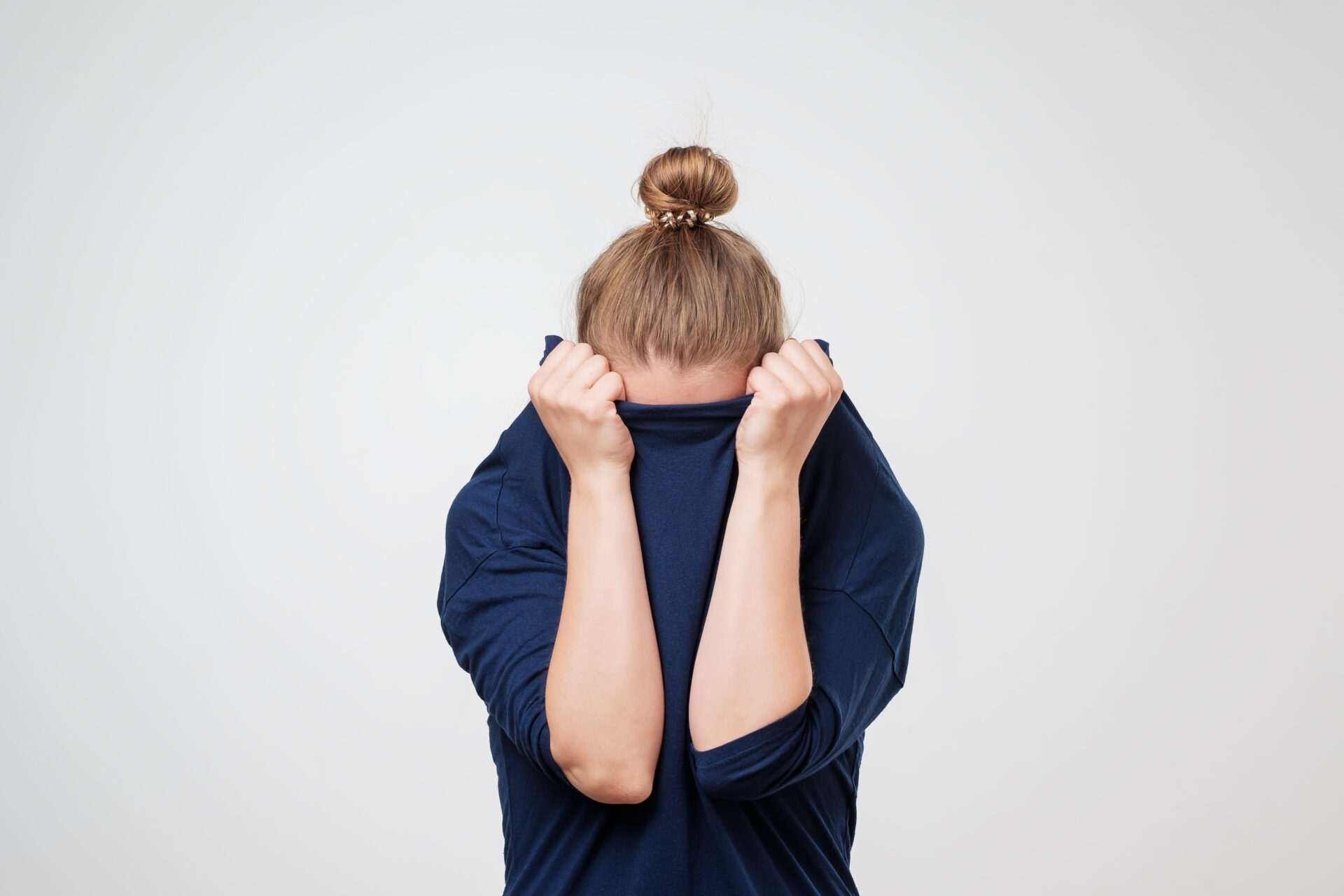Phobias are intense and persistent fears of specific objects, situations, or environments. Unlike general fears, which are common and manageable, phobias trigger overwhelming anxiety and a strong urge to avoid the perceived threat. These reactions can disrupt daily routines and interfere with personal and professional life.
Understanding how phobias develop, recognizing the symptoms, and exploring treatment options are critical steps in supporting individuals facing these anxiety disorders.

What Defines a Phobia?
A phobia is a type of anxiety disorder characterized by an exaggerated fear response. This fear is usually tied to a particular trigger, such as heights, animals, enclosed spaces, or specific situations, and it’s usually disproportionate to the actual level of threat.
For example, a specific phobia known as claustrophobia is a mental health condition belonging to a category of anxiety disorders. Unlike short-term anxiety, a phobia persists for six months or longer and tends to provoke avoidance behaviors.
People may go to great lengths to stay away from the trigger, even when it disrupts their lifestyle. In many cases, these reactions begin in childhood or adolescence but can continue into adulthood if left untreated.
Genetics, brain chemistry, and environmental factors all play a role in the development of phobias [1]. A single traumatic event can also spark a long-term fear response. Over time, the brain begins to associate the trigger with danger, creating a deeply embedded anxiety pattern that can feel automatic and uncontrollable.
Common Types of Phobias
Phobias can fall into several categories, with some more common than others [2]. These often include fears based in nature, medical settings, or certain social and situational experiences.
Some animal-related phobias include:
- Arachnophobia (spiders)
- Cynophobia (dogs)
- Entomophobia (insects)
- Ophidiophobia (snakes)
Some environmental phobias include:
- Acrophobia (heights)
- Aquaphobia (water)
- Astraphobia (thunder and lightning)
Some medical-related phobias include:
- Trypanophobia (needles)
- Hemophobia (blood)
- Dentophobia (dentists)
Some situational phobias include:
- Aerophobia (flying)
- Claustrophobia (tight spaces)
- Amaxophobia (driving)
Other specific phobias include:
- Coulrophobia (clowns)
- Emetophobia (vomiting)
- Trypophobia (clusters of small holes)
- Thanatophobia (death)
While some of the phobias above may be simpler in ways, the phobia known as agoraphobia has a more complex diagnosis [2]. It involves the fear of being in situations where escape might be difficult or help might not be available, often linked to public or crowded spaces.
This type of phobia requires that the person react to several distinct triggers, such as using public transportation, standing in line, or being alone outside.
Psychological Effects of Phobias
Phobias can cause a combination of emotional, physical, and behavioral symptoms [3]. These reactions can occur when facing the trigger or even when simply thinking about it. While specific symptoms vary from person to person, the overall impact is often disruptive.
Emotional and mental symptoms may include:
- Intense fear or dread
- Panic attacks or overwhelming anxiety
- A sense of losing control
- Detachment from reality (derealization)
- Detachment from oneself (depersonalization)
Physical symptoms often show up as:
- Increased heart rate
- Shortness of breath
- Nausea or dizziness
- Trembling, sweating, or chills
- Chest tightness or lightheadedness
- Tunnel vision or feeling faint
Behavioral symptoms typically involve avoidance, such as refusing medical care due to a fear of needles or procedures. They can also include relocating, changing jobs to avoid specific environments, or turning down new opportunities to avoid a potential trigger.
Children may exhibit unique symptoms, including crying, tantrums, clinging behavior, or freezing when confronted with a phobia trigger. Early identification is key, as symptoms may be misinterpreted as general behavioral issues if not properly evaluated and diagnosed.
What Causes Phobias?
Phobias develop when the brain’s fear response becomes hyperactive. Normally, fear helps protect against real threats. However, in the case of a phobia, this mechanism becomes exaggerated, activating the body’s fight-or-flight response without a valid danger present.
Several contributing factors may increase the likelihood of developing a phobia [4]:
- Trauma: A frightening or painful event, either experienced first-hand or indirectly witnessed, can become a long-lasting trigger.
- Genetics: People with a family history of anxiety or specific phobias may be more prone to developing one themselves.
- Learned Behavior: Children, in particular, may adopt fears from parents, caregivers, or peers who model anxious responses.
- Media Exposure: Repeated exposure to negative imagery, stories, or warnings about specific situations can also reinforce phobic reactions.
In most cases, phobias do not stem from a single cause. Instead, they arise from a blend of learned experiences, genetic vulnerability, and psychological reinforcement that trains the brain to associate certain stimuli with fear [4].
How are Phobias Diagnosed?
Diagnosing a phobia typically begins with a comprehensive assessment by a licensed mental health professional, such as a psychologist or psychiatrist. Lab tests or imaging are not necessary; instead, the diagnosis relies on a detailed clinical interview [4].
Providers often use structured questionnaires and checklists to evaluate the specific triggers involved, as well as the severity and frequency of the fear response. They look at whether the fear leads to avoidance or lifestyle disruptions in addition to the duration of the symptoms, as they must last six months or more. Finally, providers will evaluate whether symptoms are better explained by another condition, such as panic disorder or post-traumatic stress disorder (PTSD).
To meet the criteria for a specific phobia, the fear must be out of proportion to the actual risk posed and must interfere with daily functioning. Understanding the full scope of a person’s experience helps the provider rule out other conditions and develop an effective treatment plan.
Treatment and Mental Health Support for Phobias
Phobias are highly treatable, especially when individuals engage in evidence-based therapies. Most treatment plans involve psychotherapy, medication, or a combination of both, depending on the individual’s needs [5].
Cognitive Behavioral Therapy
Cognitive behavioral therapy (CBT) is the most widely used approach for treating phobias. CBT helps people recognize irrational thought patterns and replace them with balanced, realistic thinking. The process often includes learning relaxation techniques, restructuring negative beliefs, and gradually facing the feared object or situation.
Exposure Therapy
Exposure therapy works by helping people gradually confront their specific fear. Over time, it can reduce avoidance behaviors and ease one’s anxiety response.
This approach can take several forms:
- Systematic Desensitization: This is a slow, step-by-step approach that begins with mild exposure and builds up to more direct encounters.
- Flooding: This is a more intense version where the person is exposed to the feared situation all at once under professional guidance.
- In Vivo Exposure: This involves real-life interaction with the trigger.
- Imaginal Exposure: This involves visualization of the feared object or event, and is used when real exposure isn’t practical or safe.
Medications
In some cases, medications support the therapy process. Antidepressants, such as selective serotonin reuptake inhibitors (SSRIs), and anti-anxiety medications, such as beta-blockers or benzodiazepines, may help manage physical symptoms.
However, medication is typically used in conjunction with therapy, not as a standalone solution. A healthcare provider will assess risks, benefits, and side effects before prescribing medication for treatment.
Facing Fears With Confidence
Phobias can be powerful, but they do not have to control a person’s life. For example, with proper treatment, a person with an overwhelming fear of the dentist can receive much-needed dental care.
Through a combination of therapy, education, and in some cases, medication, individuals can learn to navigate their fears and regain control over their daily experiences. Early intervention, tailored treatment plans, and consistent follow-through can significantly enhance treatment effectiveness and support continued progress [5].
Phobias are common, and they can affect individuals across all ages and backgrounds. Seeking professional support is no different than receiving care for a physical health condition. Overall, it is a responsible and necessary step toward improved well-being. When phobias are addressed directly and with the right support, long-term relief becomes a possibility for many.
- National Institute of Mental Health. (n.d.). Specific phobia. U.S. Department of Health and Human Services. https://www.nimh.nih.gov/health/statistics/specific-phobia. Accessed May 2, 2025.
- Mayo Clinic Staff. (n.d.). Specific phobias: Symptoms and causes. Mayo Clinic. https://www.mayoclinic.org/diseases-conditions/specific-phobias/symptoms-causes/syc-20355156. Accessed May 2, 2025.
- Harvard Health Publishing. (n.d.). Phobia. Harvard Health. Retrieved May 6, 2025, from https://www.health.harvard.edu/a_to_z/phobia-a-to-z. Accessed May 2, 2025.
- Samra, Chandan K, and Sara Abdijadid. “Specific Phobia.” Nih.gov, StatPearls Publishing, 12 Aug. 2024, www.ncbi.nlm.nih.gov/books/NBK499923/. Accessed May 2, 2025.
- Office of Behavioral and Social Sciences Research. (2021). Treating phobias: Contributions of behavioral and social sciences research. U.S. Department of Health and Human Services, National Institutes of Health. https://obssr.od.nih.gov/sites/obssr/files/2021-11/BSSR%20Fact%20Sheet%20-%20Phobias%20-%20FINAL.pdf. Accessed May 3, 2025.
The Clinical Affairs Team at MentalHealth.com is a dedicated group of medical professionals with diverse and extensive clinical experience. They actively contribute to the development of content, products, and services, and meticulously review all medical material before publication to ensure accuracy and alignment with current research and conversations in mental health. For more information, please visit the Editorial Policy.
We are a health technology company that guides people toward self-understanding and connection. The platform provides reliable resources, accessible services, and nurturing communities. Its purpose is to educate, support, and empower people in their pursuit of well-being.
Nikki Seay is a professional writer with over a decade of experience in digital health and clinical healthcare.
Holly Schiff, Psy.D., is a licensed clinical psychologist specializing in the treatment of children, young adults, and their families.
The Clinical Affairs Team at MentalHealth.com is a dedicated group of medical professionals with diverse and extensive clinical experience. They actively contribute to the development of content, products, and services, and meticulously review all medical material before publication to ensure accuracy and alignment with current research and conversations in mental health. For more information, please visit the Editorial Policy.
We are a health technology company that guides people toward self-understanding and connection. The platform provides reliable resources, accessible services, and nurturing communities. Its purpose is to educate, support, and empower people in their pursuit of well-being.


